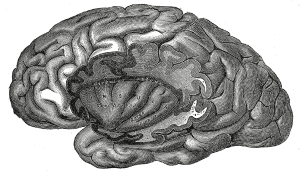By Julia Turan, Communications Manager
You know something’s not right when more Americans are dying from pain medications than illegal drugs. This opioid crisis is filling headlines, and rightly so. However, for patients with chronic pain, tolerance to opioids such as morphine, not addiction, is the real issue. Tolerance is not usually a problem for acute pain after injuries or surgery, but for chronic pain, the patients need the drug to work over a long period.
Most studies have focused on how tolerance affects individual brains cells (neurons). New research from The Journal of Physiology clarifies a piece of the puzzle of how opioid tolerance changes the communication between neurons. This brings us one small step closer to one day developing pain therapies that avoid the development of opioid tolerance.

Tolerance to a drug means that larger and larger amounts are required to achieve the desired effect. Patients can become tolerant regardless of whether or not they are addicted. Tolerance does not result from abusing the drug, but rather, it can occur even when the patients follow their course of treatment as required.
The research, led by Adrianne Wilson-Poe and Chris Vaughan at The University of Sydney looked at rat brain slices after giving the animals a low dose treatment of morphine that produces tolerance. To study this, the researchers used a technique that records electrical activity in an area called the midbrain that plays an important role in the pain-relieving effects of opioids. Rather than examine individual neurons they measured how neurons talk to each because this communication is how the brain works.

To understand their findings, we need to understand a bit about how our neurons talk to each other. To send a signal, molecules travel from the sender brain cell to the receiver across a gap called the synapse. The synapse has two sides, the pre-synapse and the post-synapse. The pre-synapse is part of the brain cell sending the message, and the post-synapse is part of the receiving cell.
One of the molecules sent between neurons is called GABA. Opioids normally decrease the release of GABA. After chronic treatment with opioids, the researchers found that their dampened effect was due to fewer molecules of GABA being available on the sending side. Consequently, opioids had less of an effect on GABA release from the sending side, as there were fewer molecules around. This reduced communication between neurons is likely to contribute to reduced effectiveness of opioids after chronic treatment.
